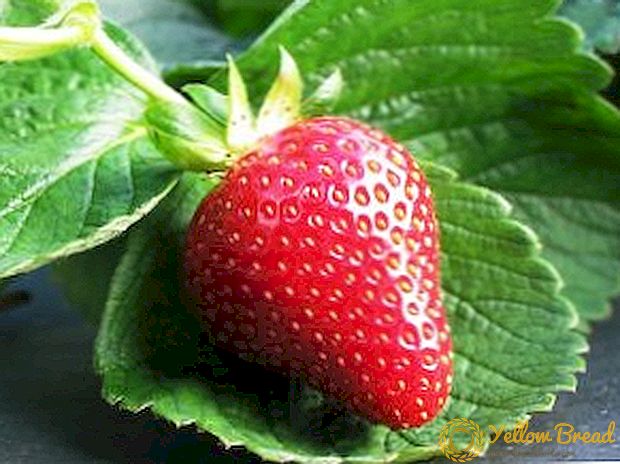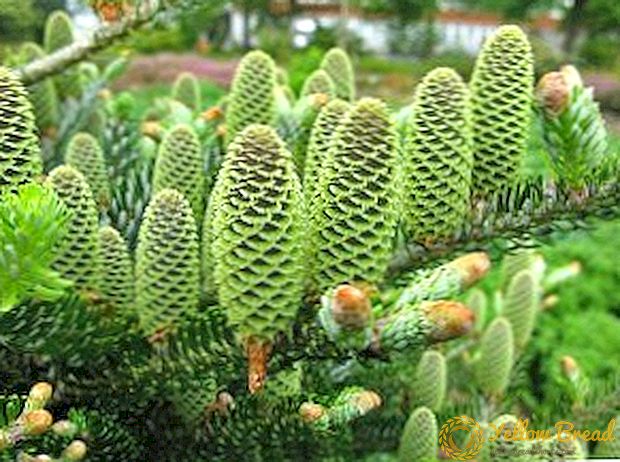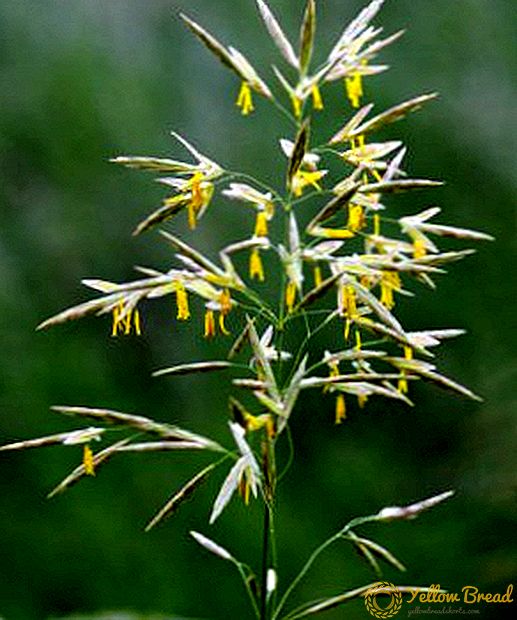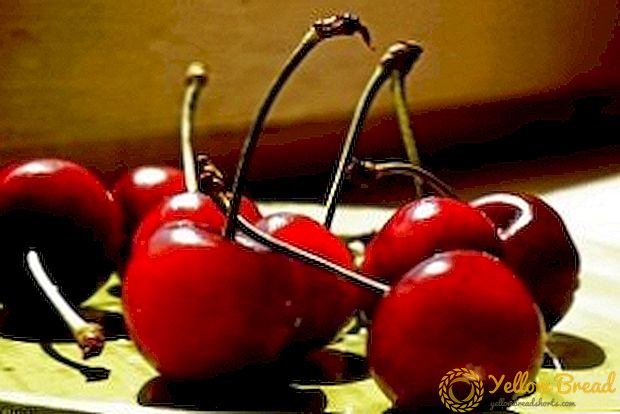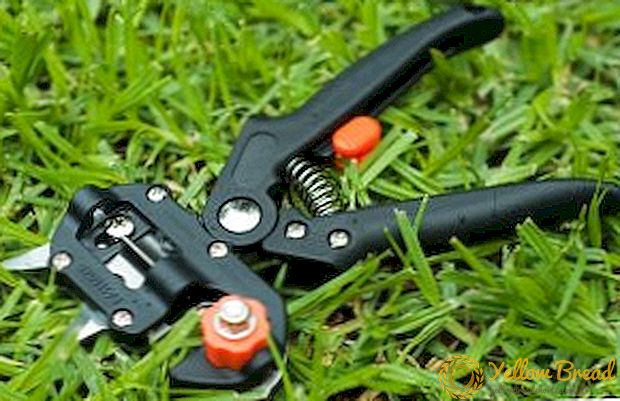 Grapes are considered to be the first fruit crop to be grown in orchards - this berry dates back over 6,000 years.
Grapes are considered to be the first fruit crop to be grown in orchards - this berry dates back over 6,000 years.
Breeders brought a huge variety of varieties, with a variety of external data and taste. In this article we will talk about one relatively young, but successfully grown variety - Kishmish Zaporozhye.
- Breeding history
- Variety descriptions
- Bushes
- Bunches
- Characteristics of grapes
- Yield
- Gestation period
- Winter hardiness
- Disease and Pest Resistance
- Planting rules for seedlings
- Grade Care
- Separately about pruning
- The advantages and disadvantages of the variety
Breeding history
Looking at the name, it immediately becomes clear where this grape comes from. Zaporozhye breeder Yevgeny Klyuchikov, by crossing the Victoria and Rusbol grape varieties, obtained a new type of Kishmish with a high level of yield and frost resistance.
Variety descriptions
Let's find out, thanks to which the Kishmish Zaporozhye grape has gained such popularity - later in the article there will be a detailed description of the variety, requirements for planting and caring for it.
Bushes
The bushes Kishmish Zaporozhye very high fruiting. On one bush can be up to 95% of fruitful shoots! On each shoot grows on 2 large clusters with juicy berries. Young leaves and scapes of light red color.
Bunches
The average weight of one bunch is 600-750 g, however, the real giants are known, whose weight can reach 1.5 kg. At the same time, berry density is average. Conical shape.  The berries are characterized by a whole palette of shades: red, burgundy and purple colors. Often there are clusters with a wing, and in a fruitful year there may be several such wings. In this there is a bad side - often the bush "overloads" itself with berries.
The berries are characterized by a whole palette of shades: red, burgundy and purple colors. Often there are clusters with a wing, and in a fruitful year there may be several such wings. In this there is a bad side - often the bush "overloads" itself with berries.
Characteristics of grapes
Let's highlight the main characteristics of this grape variety:
- high yields;
- earlier ripening of fruits;
- 3-4 seedlessness class (can be decoded as a permissible small amount of rudiments - seed pods);
- high frost resistance;
- good resistance to fungal diseases characteristic of grapes.
Yield
As mentioned above, Kishmish Zaporizhia has a high yield. The first juicy fruits can be enjoyed in August. 
Gestation period
Berry ripening is also very fast (110-120 days) - precociousness went to the Zaporozhye hybrid from its grape “parents”.
Winter hardiness
Zaporizhish Zaporozhye is not afraid of the winter cold. It is able to withstand temperatures down to -25 ° C. Covering it in the winter is not necessary - this is also a good indicator of the variety, because it is not always possible to care for the garden in the autumn.
In order for the grapes to comfortably spend the winter in your absence, it can be prikopat or cover. Coniferous branches or special material - agrofibre will reliably hide a grape bush from frost.
But you should not cover with foliage or dry grass - in such a shelter rodents, who unequivocally eat your grape bush, can spend the winter.
Disease and Pest Resistance
The Kishmish Zaporozhye grape variety has an increased resistance to such popular grape diseases: mildew, oidium, and grape rot. But the wasps can cause serious damage to the appearance of the berries.  The marmalade taste and sweet aroma of Kishmish attracts these insects. To discourage wasps from your berry harvest there are many ways, for example, timely processing of bushes with insecticides.
The marmalade taste and sweet aroma of Kishmish attracts these insects. To discourage wasps from your berry harvest there are many ways, for example, timely processing of bushes with insecticides.
Planting rules for seedlings
Having decided to plant this grape variety in the garden, you will not face any difficulties. Seedlings are planted in spring or autumn. You choose what time of year is more convenient for you. The place of planting plays an important role - in order to fully ripen the Kishmish berries, you need a sunny place.
In addition, make sure that the selected place does not closely adhere to the groundwater - having a developed root system, Kishmish can simply rot in such a place.
So, the ideal place is chosen, the most important thing remains - the planting of seedlings directly into the open ground.Next, you need to dig a hole with a depth of at least 70 cm and a length of at least 80 cm.
Lay the drainage layer on the bottom, then fill it with earth (the best soil type for this Kishmish variety is black soil). Insert the seedling into the hole, gently straightening the rhizome and falling asleep with black soil. The last stage of planting is abundant watering. Grapes like abundant watering.
Grade Care
Care for a variety of trouble will not give you. It is important to remember these points:
- trimming;
- watering (mandatory watering with an interval of 4-5 days. In the summer heat, you can enter drip irrigation of grapes);
- weeding and loosening the soil (removal of weeds and grass and root-loosening the soil);
- prevention of diseases and insect pests (treatment of wasps and prophylactic treatment of Bordeaux diseases against diseases).
Separately about pruning
Pruning grapes - This is a mandatory procedure. Since this variety is prone to overload, it is important to trim the shoots in a timely manner. Experienced gardeners recommend leaving 25-33 eyes on one bush.
It is best to immediately cut into 6-7 eyes. This should be done in the spring, as long as the winter frosts have already receded. Weak pruning weak and damaged branches. 
The advantages and disadvantages of the variety
The advantages of Kishmish Zaporozhye necessarily include:
- high yield;
- increased resistance to diseases and pests;
- frost resistance;
- pronounced taste of berries;
- early ripening of berries.
- the tendency of the shrub to form a large number of stepsons;
- difficult separation of the bunch from the stalk itself;
- eating berries by wasps.
As you can see, the disadvantages of this variety are minor. Deciding to grow Kishmish Zaporozhye in your garden, you will get a rich harvest of table grapes with excellent taste, without spending much effort in growing and caring for them.

